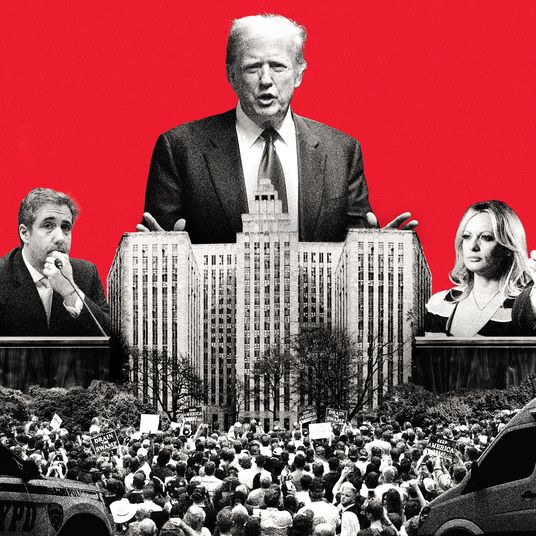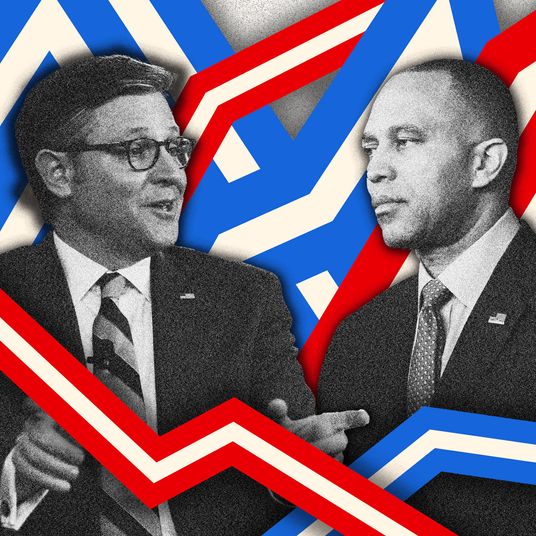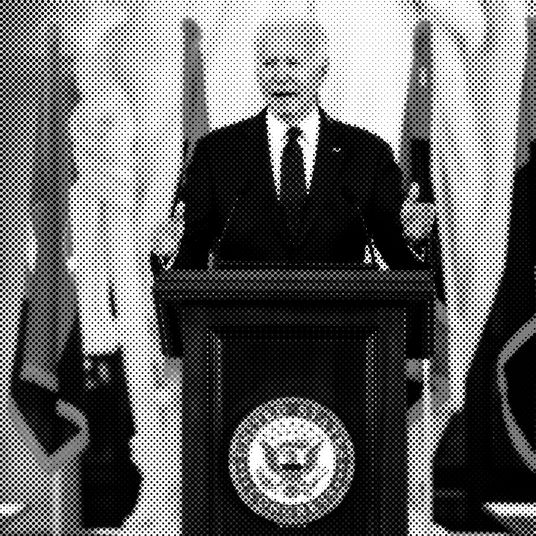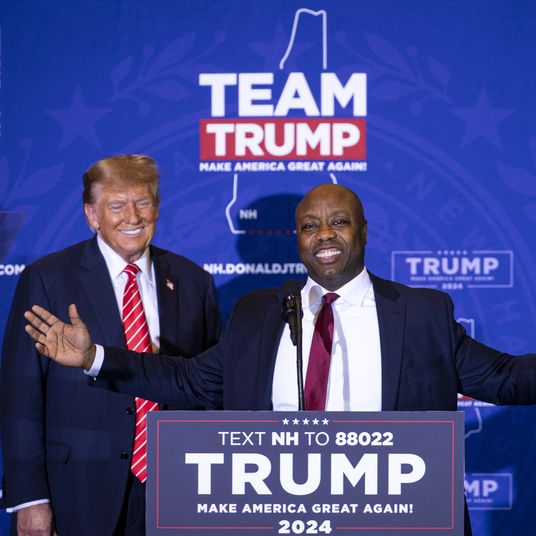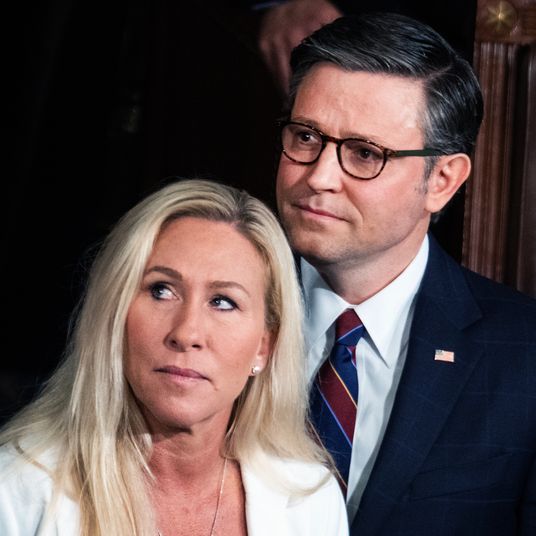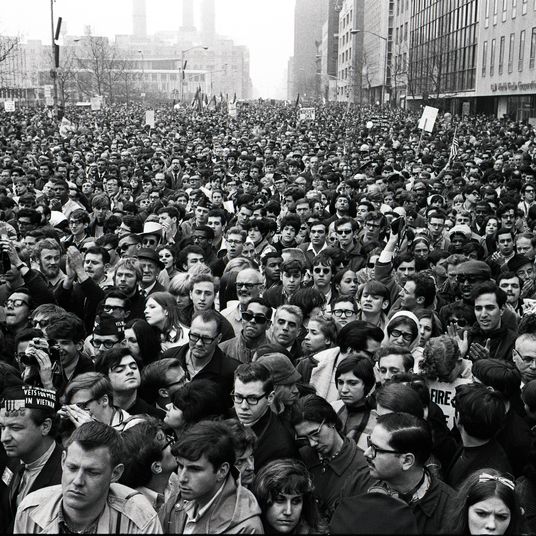
Voting Republican has become an activity analogous to watching an episode of Matlock with a tall glass of Metamucil: ordinary for the elderly, but a marker of eccentricity among the young.
In 2016, Donald Trump commanded the support of only 28 percent of voters under 30, according to Pew Research. His disapproval rating among Americans under 35 currently hovers around 70 percent. And millennials’ antipathy for our Republican president isn’t personal; the Fox News grandpa-in-chief might be especially unappealing to the rising generation, but the kids don’t have much use for the GOP’s kinder, gentler reactionaries, either. Less than 30 percent of millennials wanted Republicans to retain control of Congress last year. And in broader measures of generational opinion, both millennials and Gen-Zers evince higher levels of support for liberal ideological premises and policy proposals than any older cohorts.
This trend — and the challenges it poses for the Republican Party — have been widely discussed. And some conservative pundits have found comfort in the fact that, as millennials have moved left, graying baby-boomers have shuffled right. This might be a lousy trade in the long run (since, in the long run, boomers will all be dead). But in the immediate term, the GOP has derived a good deal of benefit from age polarization, as older voters cast ballots at much higher rates than the young ones do.
And yet, the Republicans’ growing reliance on seniors poses challenges of its own. Put simply, it’s difficult to be the party that’s hell-bent on shrinking the welfare state when your core voters are the welfare state’s primary beneficiaries. In recent years, the GOP has managed to finesse this tension by slow-walking its ambitions for entitlement spending, baldly lying about the Democratic Party’s position on entitlements, and portraying all other transfer programs as a threat to older Americans’ hard-earned Social Security and Medicare benefits.
But America’s deepening retirement crisis is eroding the efficacy of this gambit. And that’s a big problem for the GOP — since, as millennials’ share of the electorate steadily grows, it will be all the more imperative for Republicans to maintain landslide margins among seniors.
The recipe for America’s burgeoning retirement crisis is simple. Just take one giant generation entering its homestretch, four decades of tepid working-class wage growth, a smattering of medical innovations that increase elder life expectancy, five metric tons of health-care inflation, and a pinch (or less) of private pensions, and you end up with 18 million baby-boomers living out their golden years on the edge of bankruptcy.
Nearly half of all working-age Amercians have zero dollars saved for retirement. Among households led by those between the ages of 55 and 64, the median retirement account balance is about $12,000. Only a small fraction of the next wave of retirees will collect public or private pensions; these days, most small businesses don’t even offer 401ks. Meanwhile, an American who survives until 60 can expect to live for another 23 years (five years longer than in 1970), and the median cost of a private room in an American nursing home is now more than $92,000 a year.
This disparity between retirees’ financial resources and their material needs isn’t just a wrenching challenge for nonaffluent boomers. It’s also a burden for their loved ones. As Rachel Cohen notes in The New Republic, “More than 40 million people provide unpaid caregiving, spending on average 20 percent of their incomes each year on expenses like mortgage payments and medical bills.” A significant portion of that 40 million will be the economically secure siblings of low-wealth boomers; which is to say, the kind of seniors who are especially likely to vote Republican.
The GOP cannot meet this cohort’s material needs merely by keeping the government’s hands off their Medicare. Or, at least, it won’t be able to if the Democratic Party continues its leftward march on retirement issues. Back when there was a bipartisan consensus that entitlements would have to be trimmed, Republicans didn’t need to fret too much about the inherent tension between their commitment to ever-lower taxes and their reliance on ever-older voters. But the days of Simpson-Bowles are dead and gone. In 2019, Democrats are pushing to expand benefits for America’s seniors — which is one proposal for welfare-state expansion that Republicans can’t paint as a threat to seniors’ benefits. As Rachel Cohen writes:
There are signs that retirement will play a significant role in the 2020 race. In February, Bernie Sanders reintroduced the Social Security Expansion Act, with sponsorships from three other leading Democratic presidential contenders: Cory Booker, Kirsten Gillibrand, and Kamala Harris. They belong to a congressional caucus dedicated to increasing Social Security benefits. Formed last fall, it already has more than 150 Democratic members, and Sanders and Elizabeth Warren, another presidential candidate, are its co-chairs in the Senate.
… Encouragingly, the states have also begun to propose solutions. In 2017, Hawaii launched a program to reduce the cost of senior care, dispensing $70 a day for up to 365 days to family caregivers. In 2018, Maine voters considered a ballot measure that would have established the nation’s first universal home care program. The proposal suggested taxing Maine’s highest earners to pay for caregiving for any adult aged 65 and older who wanted it. It didn’t pass (powerful groups like the Maine Hospital Association and the Maine State Chamber of Commerce torpedoed the effort), but similar ideas will likely surface elsewhere. This year, legislators in Washington state are voting on a bill to provide residents with up to $36,500 for costs like nursing home fees, in-home care, and wheelchair ramps[.]
If ideas like “universal home care” gain steam, the GOP is going to have a much harder time reconciling the anarcho-capitalist ambitions of its donor class with the fiscal preferences of its older base.
To be sure, if voters reliably prioritized their material interests over their cultural resentments and partisan attachments, the Republican Party would have already gone the way of the Whigs. But as far as subgroups of ordinary Americans go, retirees are well-organized and civically engaged, and thus, tend to know when their interests are being directly threatened. It is not a coincidence that George W. Bush’s greatest betrayal of “small government” took the form of Medicare Part D, or that the Trump White House’s most reasonable policy idea is currently a (half-baked) plan for lowering prescription drug prices.
And the idea that Republican hostility to the welfare state could lead older voters to defect from the party’s base — thereby ending the right’s lease on power — is not entirely hypothetical. In 2018, Democrats worked tirelessly to turn the midterms into a referendum on the GOP’s plans for repealing and replacing Obamacare, which had included cuts to Medicaid that would have been devastating for many seniors. That November, voters over 65 split their ballots almost evenly between the two major parties — which was more than enough to drown Paul Ryan’s gerrymandered majority beneath a rising blue tide.






